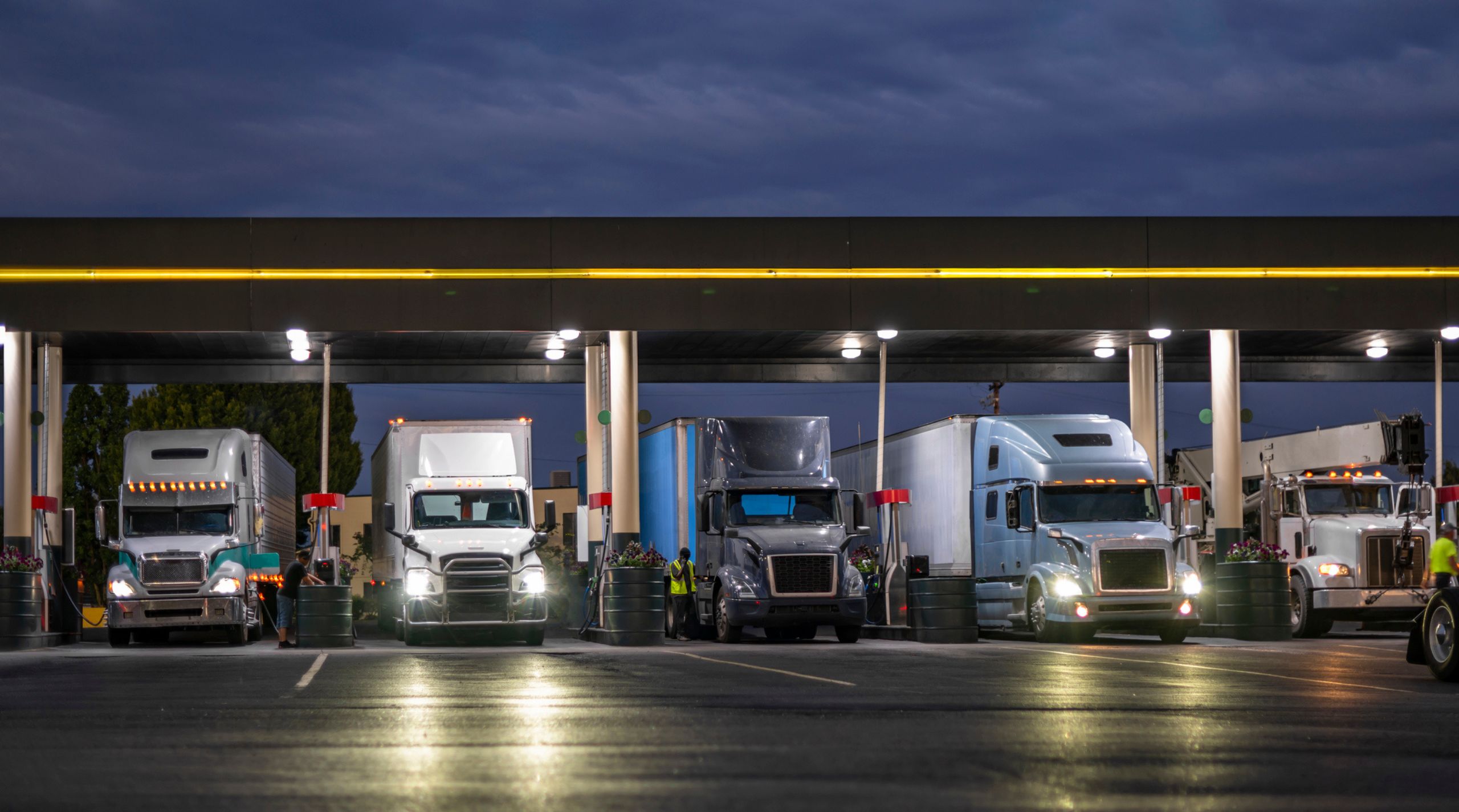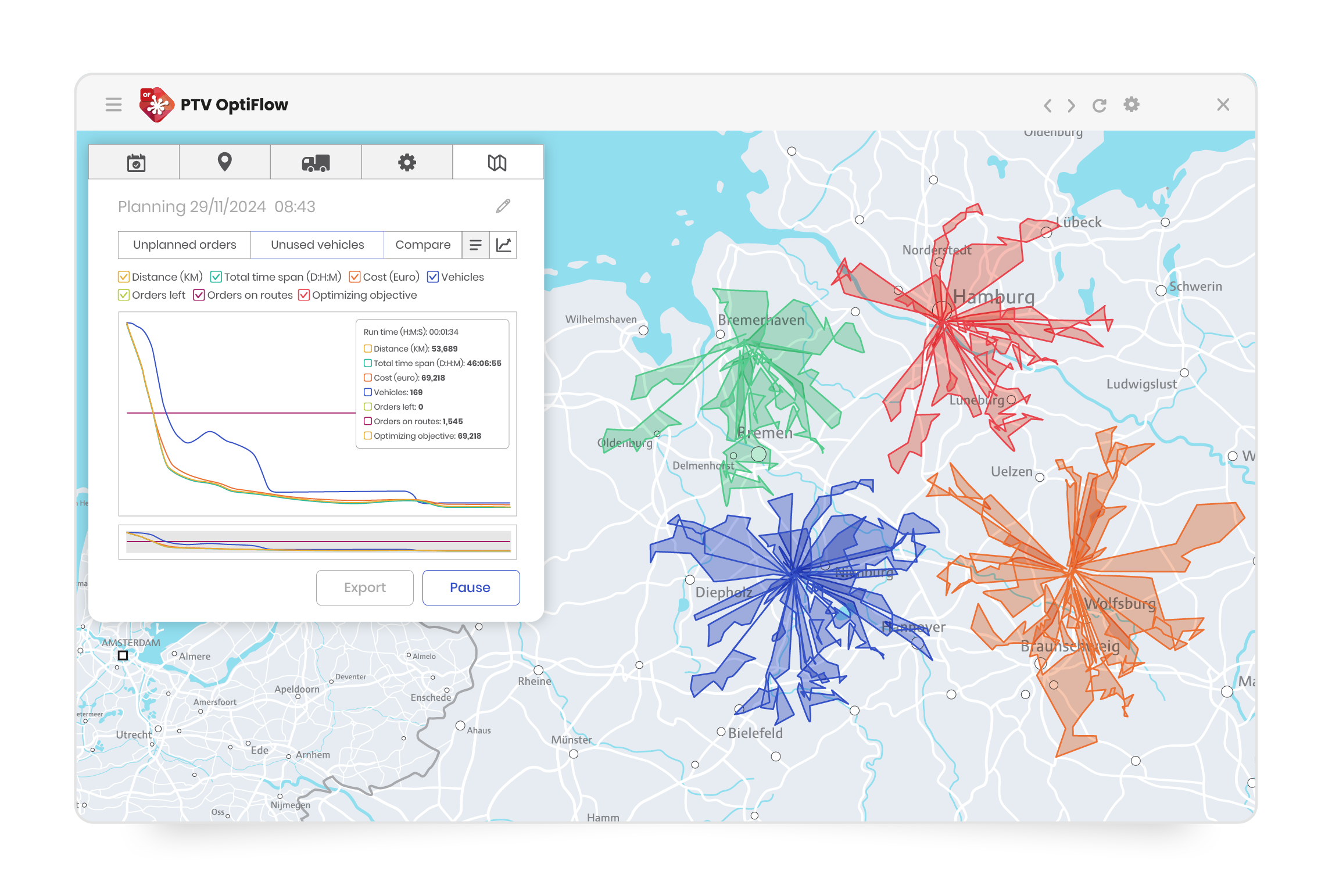By 2026, fleets that rely solely on traditional internal combustion vehicles will face mounting pressure from rising fuel costs, stricter emission rules, and growing expectations for sustainability. Meanwhile, the adoption of electric and hybrid vehicles is accelerating, which in turn will soon create the new operational reality: mixed fleets.
Mixed fleets are no longer experimental but the practical choice for balancing efficiency, cost, and environmental impact. But managing a combination of ICE, hybrid, and EV vehicles understandably introduces new set of challenges. From route assignments to energy management, fleet managers need strategies that deliver measurable results without increasing complexity.
This blog explores the trends shaping mixed fleets in 2026, the challenges they present, technology solutions, sustainability strategies, and best practices to guide decision-making.
Also related: Go through our detailed guide on how diesel and EV fleet planning differ and why it matters for your route management here.
Industry Trends for 2026
Several forces are transforming how fleets combine ICE, hybrid, and electric vehicles, setting new benchmarks for performance and sustainability:
- Rising adoption of electric and hybrid vehicles: Short- and medium-range routes are increasingly handled by EVs and hybrids, while ICE vehicles continue to support longer routes or heavier loads.
- Regulatory pressures: Low emission zones and stricter carbon reporting requirements are changing operational planning and vehicle selection.
- Data-driven decision- making: Fleet managers are now expected to monitor vehicle utilization, emissions and energy efficiency for each vehicle type.
- Integrated platforms: Successful mixed fleet management relies on systems that consolidate vehicle data, routing, scheduling, and energy usage.
- Sustainability as a priority: Tracking CO₂ emissions and energy consumption is not just for compliance, it impacts operational cost and corporate responsibility goals.
One can surely deduce that these trends will prove to be a strategic necessity, not just a temporary option. Naturally, this evolution introduces a set of operational, technical, and compliance challenges (as discussed below) but solutions are not far behind, and the following sections will show how technology and strategic practices can address them effectively.
Mixed fleet challenges you need to be aware of
Managing a mixed fleet introduces a unique set of technical, operational, and compliance-related challenges that require a more nuanced approach than traditional fleet management.
- Technically, vehicles differ in range, battery capacity, fuel requirements, and maintenance needs, making it harder to standardize operations. Route assignments must consider factors like vehicle speed, access restrictions, and service demands. At the same time, charging and fueling infrastructure must be integrated into daily planning to avoid delays and inefficiencies. Accurate scheduling also depends on the ability to consolidate data from telematics and energy sources, which can be complex across different vehicle types
- Operationally, assigning drivers to vehicles with varying capabilities adds complexity to scheduling and resource allocation. Maintenance planning becomes more intricate, as ICE, hybrid, and EV vehicles each follow different service intervals and technical protocols. Fleet replacement decisions must strike a careful balance between cost-efficiency, service reliability, and long-term sustainability goals especially as organizations aim to reduce emissions without compromising performance.
- From a compliance perspective, access to low-emission zones often depends on vehicle type and emissions profile. Regulatory reporting is becoming more detailed and time-sensitive, requiring accurate tracking of energy consumption and CO₂ Additionally, the source of energy used to charge EVs, whether renewable or grid-based can influence compliance with environmental regulations and corporate sustainability targets.
Technology and Integration Solutions
Overcoming the above challenges requires more than just operational adjustments; it calls for the right technology. Managing a mixed fleet effectively requires tools that provide visibility, streamline planning, and support operational decisions. The right technology can help balance cost, efficiency, and sustainability while reducing the risk of delays or compliance issues.
Key capabilities to look for include:
Track vehicle attributes such as range, capacity, and operational constraints. This ensures that each route is assigned to the most suitable vehicle type. Cloud-based platforms like PTV OptiFlow allow planners to simulate different fleet compositions and adjust assignments dynamically, helping operators plan with confidence.
For EV vehicles, planning must account for charging requirements, fuel stops, and depot availability. By modeling these constraints within the planning system, operators can reduce idle time, avoid route disruptions, and maximize vehicle utilization.
Explore the solution: For operators looking to optimize EV truck operations, PTV EV Truck Route Planner helps plan routes efficiently while factoring in charging stops, vehicle range, and depot constraints.
Effective systems match routes to vehicles based on cost, emissions, and operational factors. For organizations that want to integrate route optimization into their own systems rather than adoption a full SaaS solution, PTV Developer APIs enable real- time updates for route assignments and vehicle management. This allows existing operational platforms to stay synchronized with fleet data and adjustments.
Technology enables fleets to test different strategies, like adding EVs, updating infrastructure, or responding to regulatory changes. Running “what if” scenarios helps managers understand the cost, efficiency and emission implications before making decisions.
Connecting fleet management, telematics, and energy data ensures planning decisions are based on complete and accurate information. This integrated approach supports compliance reporting, sustainability tracking, and ongoing operational optimization.
By combining these capabilities, fleet managers can address the challenges of mixed operations while making informed, data driven decisions that improve efficiency and reduce environmental impact, all without adding unnecessary complexity.
Sustainability and Compliance Strategies
Beyond operational efficiency, sustainability and compliance are becoming central to fleet strategy. Mixed fleets offer a unique opportunity to reduce emissions while maintaining service levels. In that aspect, consider these approaches:
- Measure baseline emissions and energy use for each vehicle type.
- Evaluate fleet transitions: Model the impact of adding EVs or hybrids on cost and emissions.
- Assign vehicles strategically: Deploy EVs on shorter, predictable routes; retain ICE/hybrid vehicles for long or heavy-duty routes.
- Audit regulatory compliance: Ensure access to low emission zones and meet reporting requirements.
- Monitor performance: Track CO₂ per mile, energy consumption, and charger utilization to guide adjustments.

Best Practices for Fleet Managers
Mixed fleets provide flexibility and a path to sustainability. By analyzing fleet composition, planning vehicle assignments, using scenario modeling, and integrating technology, managers can improve efficiency, reduce emissions, and comply with regulations. Additionally, some of the best practices fleet managers can inculcate are as follows:
- Conduct a detailed audit of fleet composition and usage patterns.
- Map routes to vehicles based on range, capacity, and sustainability objectives.
- Include infrastructure constraints such as chargers, fuel stations, and depot access in planning.
- Run pilot programs in selected regions before scaling fleet changes.
- Use scenario modeling to assess the impact of adding EVs, chargers, or adjusting fleet composition.
- Compare planned vs actual performance to continuously improve fleet management.
If you’re ready to explore how a mixed-fleet optimization platform can model your mixed assets, optimize assignments, integrate with your TMS and support your sustainability goals, let’s talk.

